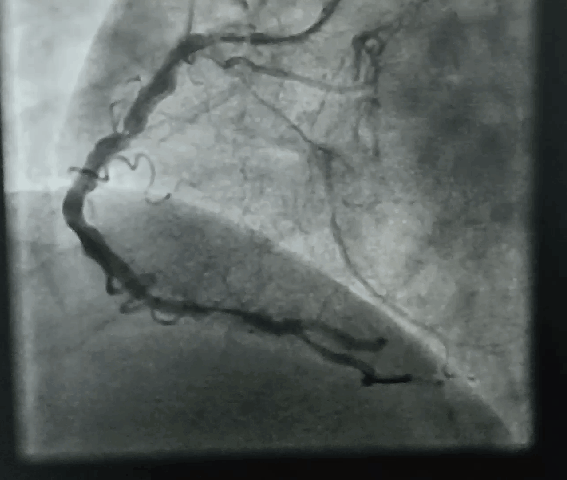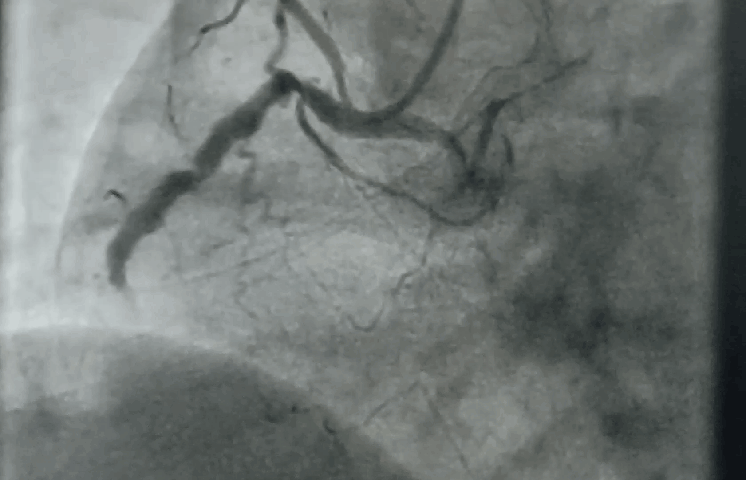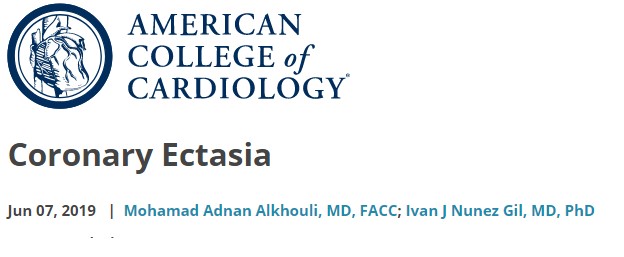Inferior STEMI, and see the first shot in RCA below. The patient was pain-free and hemodynamically stable at the time of the angiogram. (Don’t wonder how this is possible, defying the fundamental rules learned from animal experiments after acute ligation of the coronary artery)
- Go ahead and do a primary PCI as we do in any other IRA.
- Be watchful, just pass on the wire, feel the lesion, and decide thereupon. Consider intracoronary lysis.
- How about a long stent from proximal to distal RCA?
- Kissing the lesion with DEB in the tightest segment (Not a funny option )

What was done? How is the patient?
Nothing was done & nothing happened to the patient as well. Just guidewire was crossed and few minutes of balloon touch-up work. Did the patient improve? Can’t say anything because he was fine even with this total occlusion.
Lessons to be learned
- The art of leaving a lesion left unattended (rather unstented) in IRA without guilt.
- TIMI zero flow in IRA need not be a death sentence for the distal myocardium, even in STEMI.
- Sometimes, a simple guidewire crossing can do the same job as a complex angioplasty in an IRA.(For acute salvage TIMI 2 or even TIMI 1 is good enough) Most IRA accidents happen when trying improve upon this in an ectatic vessel.
- Risks of stenting in ectatic /Thrombotic segment is real
- There can be a useful role for STENTYS self-expanding stents in localized ectasia (Ref 1)
- Long-term OAC (Soon NOACs) is a perfect remedy for protecting this type of coronary.
* By the way, who are all bothered to know LAD anatomy in this patient. Is it surprising the RCA is sending collaterals to the left side in its hour of crisis? Yes. LAD had chronic sub-total lesion as well.
Reference



